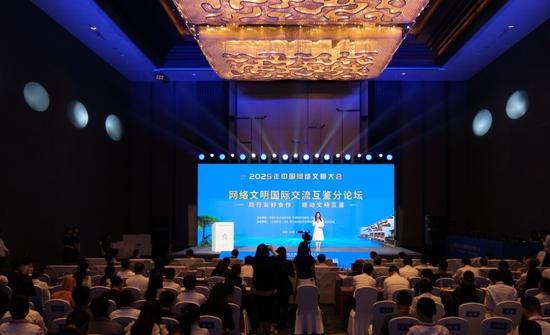As a key international maritime gateway of China's Western Land-Sea New Corridor and a vital portal to the Association of Southeast Asian Nations (ASEAN), Guangxi Zhuang Autonomous Region's Beibu Gulf Port has long prioritized enhancing its river-rail-sea multimodal transport capabilities and automation standards.

In recent years, the port has embraced the digital transformation, making smart port development a core strategy to boost its competitiveness and fulfill national strategic objectives.
At the Qinzhou Automated Container Terminal, the operational zone is bustling yet proceeds in perfect order. Quayside cranes grabbing containers rise and fall with precision, while driverless transport vehicles shuttle busily, demonstrating integrated intelligent operations enabled by first-class innovative technologies.
As the nation's first sea-rail intermodal automated container terminal, the Qinzhou facility has brought revolutionary changes to port operations through its globally pioneering U-shaped process, laying a solid foundation for smart operations.
This process has increased the operational point density of IGV (Intelligent Guided Vehicles) by 50% and reduced equipment movement distance by 35%.

The rear storage yard is adjacent to the railway central station, forming a more advanced sea-rail intermodal ecosystem via the sea-rail collection and distribution platform. This realizes fully automated docking between the railway central station and terminal logistics, creating a complete terminal-rail symbiosis that ensures efficient multimodal transport.
The intelligence of terminal operations is not only reflected in the overall process but also embedded in every detail. Driven by a series of technological innovations, the ‘smart engine' of the Beibu Gulf Port is running at full throttle.
The integrated operation model has boosted overall port operation efficiency by 30 percent, while real-time sea-rail docking has improved container transfer efficiency between railways and ports by about 50 percent.

Rooted in Southwest and Central South China, the port radiates across western China, connects to the Eurasian continent, and links up with ASEAN and the global market.
In the first quarter of 2025, its container throughput reached 2.1739 million twenty-foot equivalent units (TEUs), up 12.06 percent year on year. The sea-rail intermodal transport volume has seen a spectacular 21-fold growth, surging from 21,700 TEUs in 2017 to 476,000 TEUs in 2024.
Today, driven by continuous technological innovation, the port has made remarkable strides in smart port development, achieving fruitful results in enhancing sea-rail connectivity, service quality, and operational efficiency.
So far, Beibu Gulf Port has basically achieved its target set for 2025. Emerging as a shining example of China's smart port construction, it continues to inject strong momentum into regional economic prosperity and international trade.


















































 京公網安備 11010202009201號
京公網安備 11010202009201號